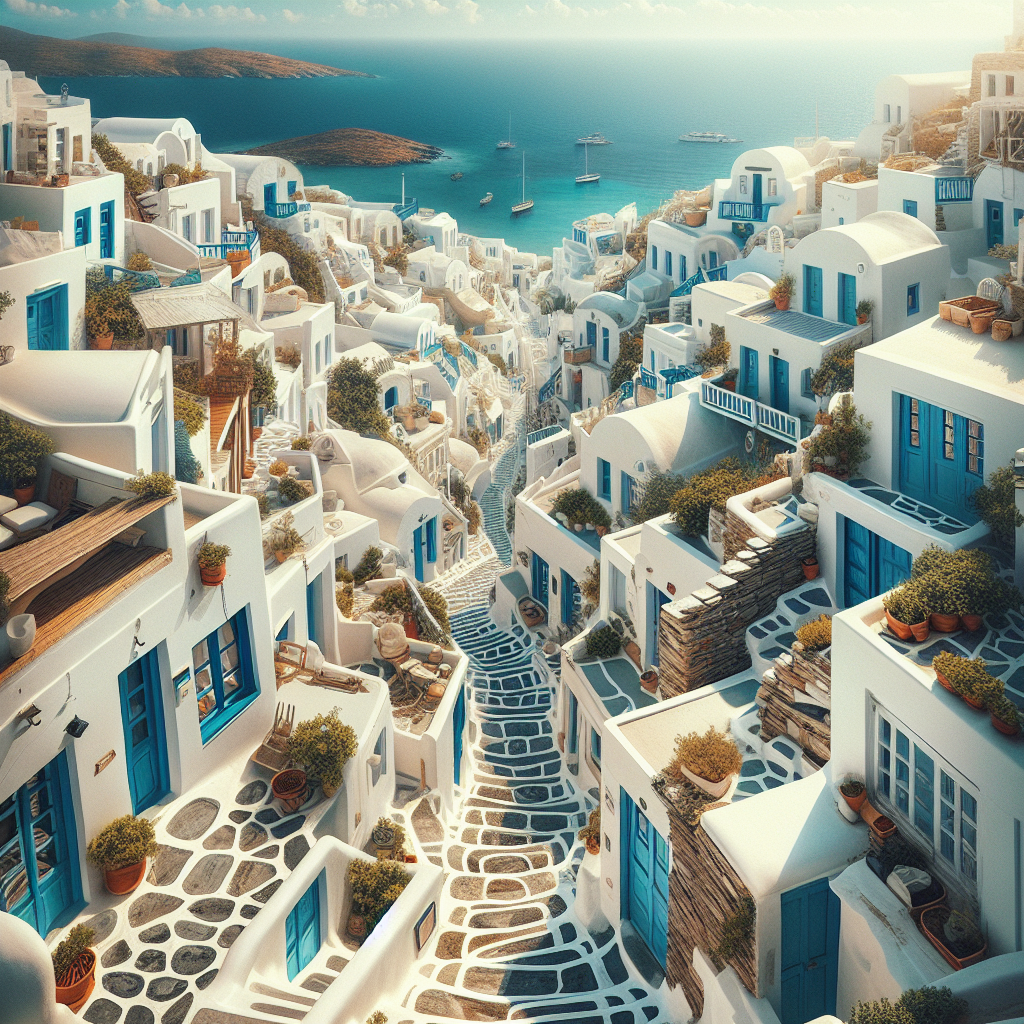
Mykonos, a gem in the Aegean Sea, is a paradise known for its pulsating nightlife, pristine beaches, and charming old town. However, this island is not only about vibrant beach parties and whitewashed Cycladic architecture. There’s more to Mykonos than meets the eye. Let’s uncover some lesser-known facts about this intriguing Greek island.
Contents
The Mythical Origins of Mykonos
Mykonos has a fascinating mythology that many may not be aware of. According to Greek mythology, Mykonos was formed from the petrified bodies of giants slain by Hercules. The island was named after its first ruler, Mykons, who was considered a descendant of the god Apollo.
The Island of the Winds
Mykonos is often referred to as the Island of the Winds. This nickname stems from the island’s weather, which is dominated by strong, cool northern winds known as the ‘Meltemi’. These winds are a blessing for windsurfers who flock to the island’s beaches during the summer months.
Iconic Windmills
Speaking of winds, Mykonos is also famous for its iconic windmills, or “Kato Mili” in Greek. Dating back to the 16th century, these windmills were primarily used for milling wheat. They are strategically located, taking full advantage of the powerful ‘Meltemi’ winds. Although they’re no longer operational, they have become a symbol of the island’s rich past.
Petros the Pelican
- One of the island’s most famous residents was Petros the Pelican – a local mascot and an unexpected symbol of Mykonos. Legend has it that a local fisherman found the wounded bird in the 1950s and nursed him back to health. Since then, Petros became an inseparable part of the local life. Even though the original Petros is no longer with us, his legacy lives on through three pelicans that continue to roam the streets of Mykonos.
A Labyrinth of Streets
Mykonos Town, also known as Chora, is a labyrinth of narrow, winding streets. This wasn’t an architectural oversight but a deliberate design to confuse pirates who frequented the Aegean Sea during the 18th and 19th centuries. The confusing layout made it easier for locals to navigate while leaving pirates disoriented.
Mykonos’ Little Venice
One of the island’s most picturesque areas is Alefkandra, often referred to as Little Venice. This charming neighborhood is a cluster of medieval houses that are perched on the edge of the sea. The houses were originally built by wealthy sea merchants, who designed them with basements that could be accessed directly from the sea.
A Haven for Artists
Mykonos has long been a haven for artists and intellectuals from around the world. The island’s unique light, combined with its beautiful landscapes, has inspired artists for centuries. In the 1930s, the School of Fine Arts was established on the island, attracting students and teachers from around the world.
The Church of Paraportiani
- One of the most photographed churches in the world, the Church of Paraportiani is a unique architectural masterpiece. It’s actually a complex of five churches, four at the base and one on top, which were built over several centuries.
The Festival of Panigiria
Every summer, Mykonos hosts the Panigiria, a series of island-wide festivals that celebrate the patron saints of each village. These festivals are a showcase of local traditions, with folk music, dancing, and plenty of food and wine.
In conclusion, Mykonos is a fascinating island that goes beyond the party scene it’s known for. Its rich history, unique architecture, and intriguing traditions make it a destination worth exploring in depth. So the next time you find yourself walking along its beautiful beaches or dancing the night away in one of its clubs, remember, there’s more to Mykonos than meets the eye.
Planning a trip to Mykonos?
Check out “Where to Stay in Mykonos in 2024” for top tips on the coolest areas and comfiest hotels, perfect for any travel style or budget. Get the inside scoop here and make your Mykonos adventure unforgettable!
Read Also:
5 Mykonos hotels near Paradise beach
Where to Stay in Mykonos on a Budget
The 15 Best Mykonos Hotels on the Beach
Mykonos vs Santorini. Which one is better to visit?
The 15 best Mykonos Hotels with Private Pools
Mykonos Nightlife Guide: The 20 best bars, night clubs and Beach clubs in Mykonos
Best area to stay in Mykonos
Where to stay in Mykonos: Beach or Town
Best 5 Star Hotels in Mykonos
Best time to visit Mykonos
Best Suite Hotels in Mykonos
Best Mykonos Hotels near Nammos
Best Mykonos Hotels near Town
Best Mykonos Hotels for Yoga
Mykonos to Athens by Ferry or Flight
